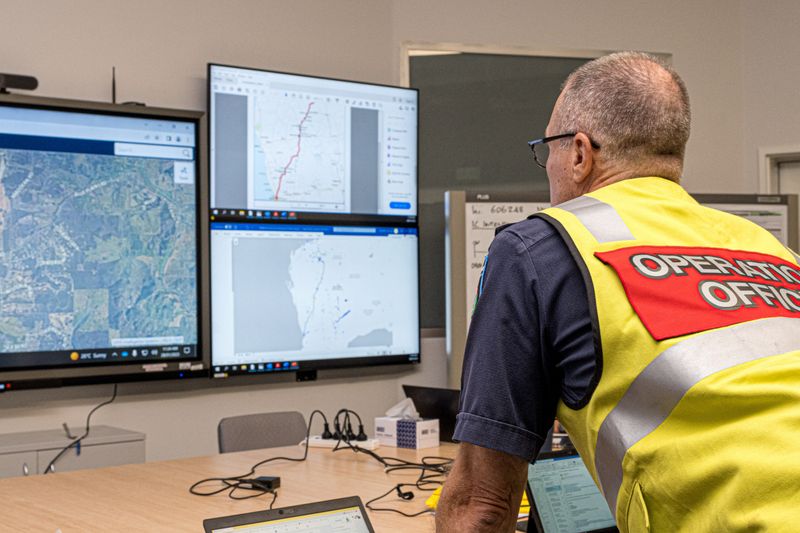By Melanie Burton and Lewis Jackson
MELBOURNE (Reuters) -Australian authorities on Tuesday sent out more personnel and specialised detection equipment to search for a tiny radioactive capsule missing somewhere in the outback, including a team from the country's nuclear safety agency.
The capsule is believed to have fallen from a road train - a truck with multiple trailers - that made a 1,400 km (870 mile) journey in Western Australia and its loss has triggered a radiation alert for large parts of the vast state.
The Department of Fire and Emergency Services said on Monday that it would take five days to retrace the road train's route. On Tuesday, it said that 660 km had been searched so far.
The hunt involves a slew of government agencies including the Department of Defence, the police and now the Australian Radiation Protection and Nuclear Safety Agency and the Australian Nuclear and Science Technology Organisation.
The capsule was part of a gauge used to measure the density of iron ore feed that had been entrusted by Rio Tinto (NYSE:RIO) Ltd to specialist contractor SGS Australia for packaging and unpackaging. Transport was then subcontracted out to logistics firm Centurion.
Authorities suspect vibrations from the road train caused the screws and a bolt from the gauge to come loose, and then the capsule fell out. The gauge was picked up from the mine site on Jan. 12 and was unpacked for inspection on Jan. 25 when the loss of the capsule became evident.
Centurion said in a statement that the capsule was dislodged from equipment contained in a crate. The transport crate and pallet were supplied by SGS, a Centurion spokesperson told Reuters by phone.
SGS did not immediately respond to a Reuters request for comment. Rio has apologised for the loss.
The road train travelled from Rio's Gudai-Darri mine in the state's remote Kimberley region to a storage facility in the suburbs of Perth - a distance longer than the length of Great Britain.
Search crews are travelling north and south along the state's Great Northern Highway as well as other sections of the road train's journey with specialised radiation detection equipment.
"Today's delivery will further boost our search efforts and complement the equipment we have been using since the search started last Thursday," Darryl Ray, incident controller for the fire and emergency services department, said in a statement.
"The equipment can detect radiation emitted by the missing capsule and is currently being used around the Perth metropolitan area and outskirts."

The silver capsule, 6 mm in diameter and 8 mm long, contains Caesium-137 which emits radiation equal to 10 X-rays per hour.
People have been told to stay at least five metres (16.5 feet) away if they spot it as exposure could cause radiation burns or radiation sickness, though driving past the capsule is believed to be relatively low risk, akin to taking an X-ray.